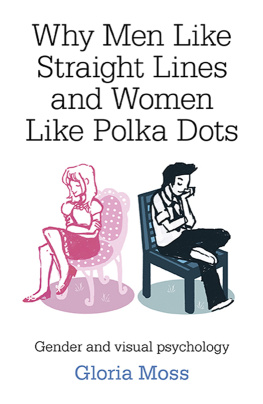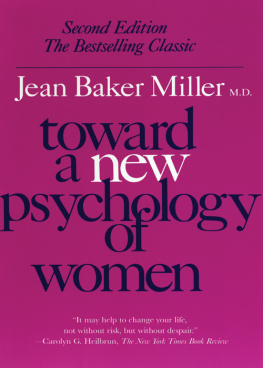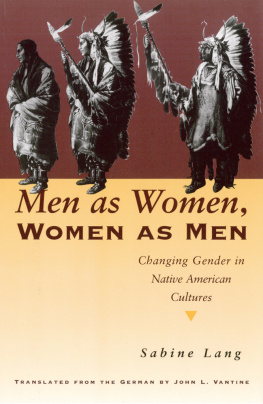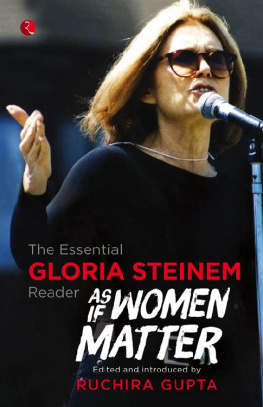Gloria Moss - Why Men Like Straight Lines and Women Like Polka Dots: Gender and Visual Psychology
Here you can read online Gloria Moss - Why Men Like Straight Lines and Women Like Polka Dots: Gender and Visual Psychology full text of the book (entire story) in english for free. Download pdf and epub, get meaning, cover and reviews about this ebook. year: 2014, publisher: Psyche Books, genre: Romance novel. Description of the work, (preface) as well as reviews are available. Best literature library LitArk.com created for fans of good reading and offers a wide selection of genres:
Romance novel
Science fiction
Adventure
Detective
Science
History
Home and family
Prose
Art
Politics
Computer
Non-fiction
Religion
Business
Children
Humor
Choose a favorite category and find really read worthwhile books. Enjoy immersion in the world of imagination, feel the emotions of the characters or learn something new for yourself, make an fascinating discovery.
- Book:Why Men Like Straight Lines and Women Like Polka Dots: Gender and Visual Psychology
- Author:
- Publisher:Psyche Books
- Genre:
- Year:2014
- Rating:4 / 5
- Favourites:Add to favourites
- Your mark:
- 80
- 1
- 2
- 3
- 4
- 5
Why Men Like Straight Lines and Women Like Polka Dots: Gender and Visual Psychology: summary, description and annotation
We offer to read an annotation, description, summary or preface (depends on what the author of the book "Why Men Like Straight Lines and Women Like Polka Dots: Gender and Visual Psychology" wrote himself). If you haven't found the necessary information about the book — write in the comments, we will try to find it.
Gloria Moss: author's other books
Who wrote Why Men Like Straight Lines and Women Like Polka Dots: Gender and Visual Psychology? Find out the surname, the name of the author of the book and a list of all author's works by series.
Why Men Like Straight Lines and Women Like Polka Dots: Gender and Visual Psychology — read online for free the complete book (whole text) full work
Below is the text of the book, divided by pages. System saving the place of the last page read, allows you to conveniently read the book "Why Men Like Straight Lines and Women Like Polka Dots: Gender and Visual Psychology" online for free, without having to search again every time where you left off. Put a bookmark, and you can go to the page where you finished reading at any time.
Font size:
Interval:
Bookmark:


First published by Psyche Books, 2014
Psyche Books is an imprint of John Hunt Publishing Ltd., Laurel House, Station Approach,
Alresford, Hants, SO24 9JH, UK
www.johnhuntpublishing.com
www.psyche-books.com
For distributor details and how to order please visit the Ordering section on our website.
Text copyright: Gloria Moss 2013
ISBN: 978 1 84694 857 2
All rights reserved. Except for brief quotations in critical articles or reviews, no part of this book may be reproduced in any manner without prior written permission from the publishers.
The rights of Gloria Moss as author have been asserted in accordance with the Copyright, Designs and Patents Act 1988.
A CIP catalogue record for this book is available from the British Library.
Design: Lee Nash
Printed and bound by CPI Group (UK) Ltd, Croydon, CR0 4YY
We operate a distinctive and ethical publishing philosophy in all areas of our business, from our global network of authors to production and worldwide distribution.
I am grateful to Buckinghamshire New University for giving me the time and encouragement to write this book. I would also like to thank a number of people who gave of their time to discuss the issues and whose views are contained throughout. Finally, I am immensely grateful to my colleague, Dr Helena Chance, Reader in the History and Theory design who read and commented on the book prior to its publication. She is an immensely busy person and was so generous in giving of her time and expertise in this way.
My sincere thanks also go to Cath Wright-Jones who produced illustrations 1, 3 and 4.
Different ways of seeing
Beauty? To me it is a word without sense because I do not know where its meaning comes from nor where it leads to.
Pablo Picasso
On a summers day early in July in 2011, Kate and William visited Los Angeles Inner-City Arts, an organisation that promotes visual arts and performances to inner-city children. After arriving, the royal couple chatted with children from the programme, then sat down among the kids in a classroom to create their own works of art. The newly wed Duke and Duchess of Cambridge were seated at adjacent easels with their backs to each other and started painting at the same time. William painted an abstract shape with straight sides while she focused her energies on a bright red circle, enveloped by concentric circles, adding a neck and head to form a snail. Polka dots were added to the circles to create a light-hearted touch, with tufts of grass to create a natural context.
Two visions which some might take to be individual, idiosyncratic responses to a paintbrush and paint. Earlier in the summer, Kates sister, Pippa Middleton, set off for a weekend of fun in Madrid with friends, and she and a female friend were photographed in summer garb she in a shoulderless dress, white with black polka dots and her friend in a grey dress with white polka dots. Then Kate herself, well into marriage and a few months short of producing royal offspring, attracted media attention in the black and white polka dot dress she wore for a trip to the Warner Brothers studios. The dress was not high fashion with a price tag of just 38, but a few weeks later she was wearing it again to the wedding of old friends William Van Cutsem and Rosie Ruck Keene. When, a few months later, she displayed her new son to the serried ranks of the worlds media, it was in a blue and white polka dot dress.
This was 2013 and I was nearing the end of a house renovation project. A must visit was to the website of the doyenne of floral prints, Cath Kidston. She has a worldwide following with 41 shops in the UK, two in Ireland, fifteen in Japan and four in Korea, and her produce is the feminine writ large with floral furnishings and accessories including even mobile phones and no fewer than 15 items in her catalogue decorated with polka dots. Amongst them was the Bath Flowers Diary with polka dots on the spine; a tape-measure bright pink with white spots; an apron; a bath mat; duvet cover; pillowcase; towels; oven glove; even luggage tag and wallet, all decorated with polka dots. Meanwhile, in the Littlewoods catalogue, in business since the 1970s, you had to stop counting the number of summer clothing items for women with polka dots. Needless to say not a single one could be found in the Littlewoods mens catalogue.
Why is this? I asked people to picture two patterns, one of stripes and one of polka dots, and asked them if they prefer one over the other. To make it easier, I asked them to picture these designs on a pair of mugs and decide which they would prefer and why. The people were a varied bunch from adults at the supermarket checkout, to friends and colleagues. Of the men I talked to, seventy-five per cent preferred stripes; and of the women, sixty-five per cent preferred polka dots. Chance alone would suggest that equal numbers of men and women would be drawn to each of the two patterns so these results indicated important variations in men and womens responses.
In terms of the reasons for the choices, one man a shelf stacker at Sainsbury supermarket who was off to China to teach English for five years said the stripes give the impression of being taller and more elongated than polka dots. Another man, an Italian collecting for a childrens charity, said that he definitely did not like polka dots and this sentiment was echoed by many of the other men. The most intriguing of comments came from a senior designer whose preference for stripes was explained in relation to their association with order over chaos, class, classical, golden section, perspective, start/end, engineered mechanical, spellbound, groove, parameters. For him, polka dots were hard to contain, anarchic, held by tension, eternal, and while two other men did express a preference for polka dots, one was quick to say that Id never wear them, Id only wear stripes.
What of womens responses? Of the nineteen women in the sample, twelve expressed a preference for polka dots. One doctoral student in psychology spoke of polka dots as less harsh, softer and less busy and more feminine than stripes which elongate and distort space more than polka dots. A senior account manager at a PR company thought they were more interesting because in your head you join them up to make a more interesting image. Another described polka dots as fun, light-hearted and humorous and able to merge into the general background while stripes were in your face, quite boring and remind me of prison. The principal of a ballet school preferred polka dots and found stripes angular and visually confrontational.
As we saw, the majority of women opted for polka dots with fewer than a third opting for stripes (one of these was quick to say that she would definitely choose a mug with polka dots). So the results of this quick and dirty survey showed that the majority of men and womens choices were for stripes and polka dots respectively with a small proportion of men and women occupying the middle ground. Maybe it is this middle ground that Bridget Riley occupies with a great but not exclusive focus on straight lines and stripes. Even Damien Hirst has produced the occasional painting with polka dots although he admits that he only painted five of these himself because I couldnt be fucking arsed doing it and he admits that in his studio the best person who ever painted spots was Rachel Howard.
Font size:
Interval:
Bookmark:
Similar books «Why Men Like Straight Lines and Women Like Polka Dots: Gender and Visual Psychology»
Look at similar books to Why Men Like Straight Lines and Women Like Polka Dots: Gender and Visual Psychology. We have selected literature similar in name and meaning in the hope of providing readers with more options to find new, interesting, not yet read works.
Discussion, reviews of the book Why Men Like Straight Lines and Women Like Polka Dots: Gender and Visual Psychology and just readers' own opinions. Leave your comments, write what you think about the work, its meaning or the main characters. Specify what exactly you liked and what you didn't like, and why you think so.








